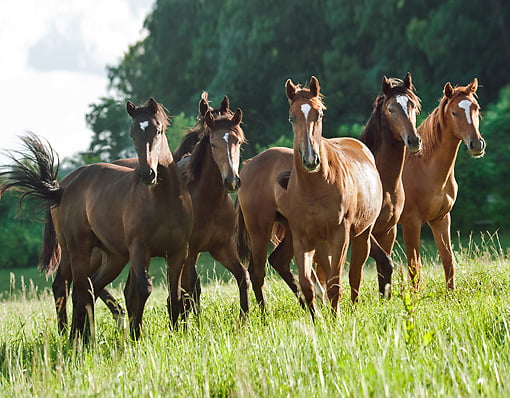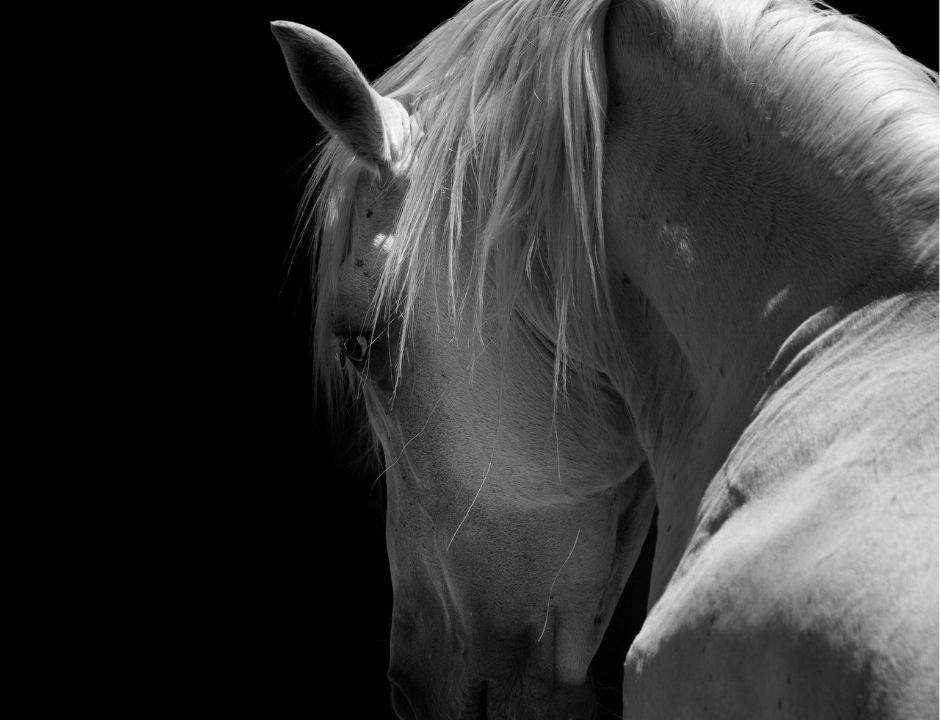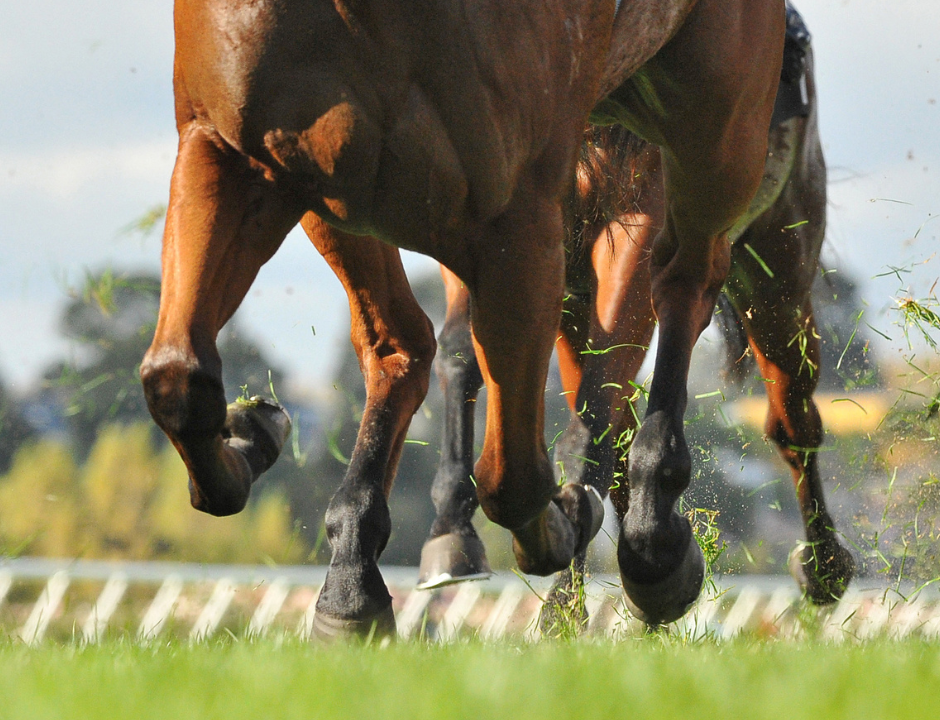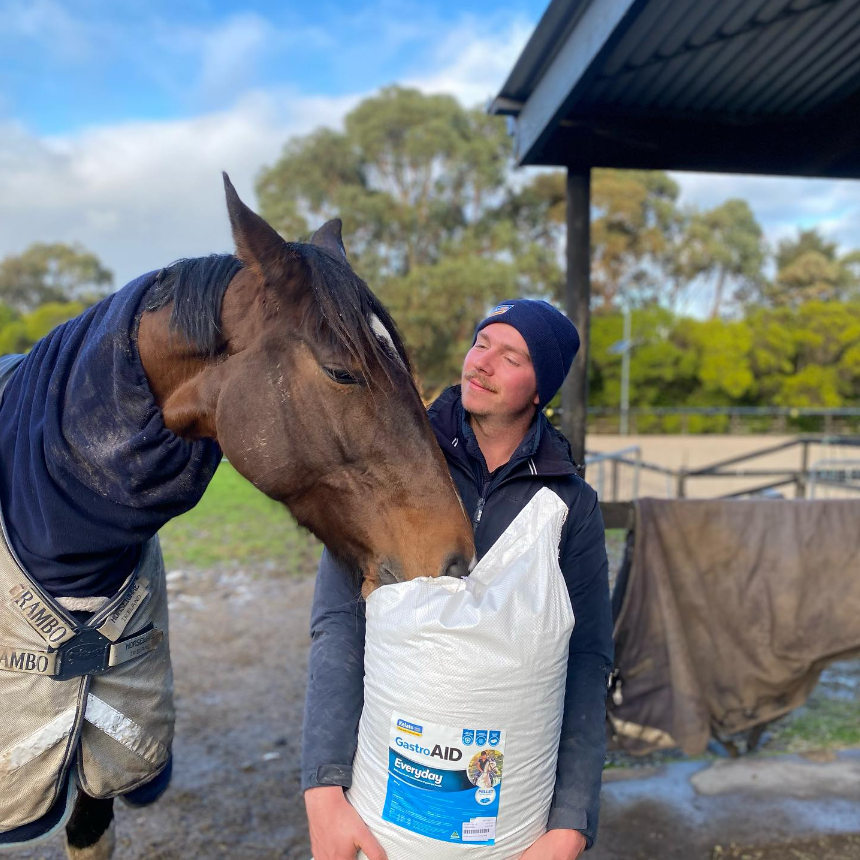Laminitis is one of the great the arch nemeses of horses and their owners… Laminitis can have debilitating long-term effects as a recurrent or chronic condition and, at worst, necessitates euthanasia of an animal in considerable pain. So, it’s no wonder we’re all scared of it!
When discussing laminitis, you may often come across the term “hindgut acidosis”. Hindgut acidosis basically means the gut content is acidic or has a low pH. There are strong links between the condition and laminitis. However, in order to understand the mechanisms involved, we must first look at how the hindgut works.
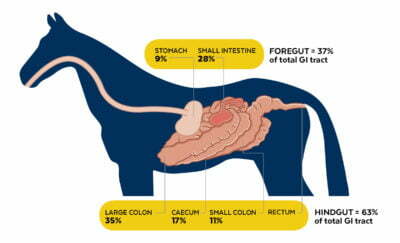
The Horse’s Engine
The horse’s hindgut is the powerhouse of their digestive system. Horses have evolved as grazing herbivores and are adapted to digest large quantities of plant fibre. To be able to gain energy from a low energy, higher fibre diet of pasture, horses developed fermentation chambers in the gut (caecum and colon) to house symbiotic microbial populations. These microbes produce enzymes to breakdown plant fibre the horse ingests. A by-product of the fermentation process is the production of volatile fatty acids (VFAs), which provide the horse with a source of energy. When a horse is eating a high fibre diet that is low in starch and sugar, their hindgut is dominated by “good” fibre-fermenting bacteria and the pH is maintained very close to neutral (pH 6.5 – 7). These bacteria are critical to digestion and the overall health of the horse.
 “Good” vs “Bad” Bacteria
“Good” vs “Bad” Bacteria
Problems start to arise when horses ingest excessive amounts of starch or sugar (such as those on high grain diets). Some of the starch/sugar escapes digestion in the small intestine and ends up in the hindgut where it is rapidly fermented by “bad” starch/sugar-loving bacteria. A by-product of this process is the production of lactic acid. The “bad” bacterial population rapidly increases in numbers and the hindgut starts to accumulate lactic acid. The pH can then drop so low that the fibre fermenters, who don’t like acidic environments, begin to die off.
Hindgut Acidosis & Laminitis
So, where does laminitis fit in with all of this? First things first… It’s important to highlight that >90% of the laminitis cases, including pasture associated laminitis, are now thought to have an endocrine cause. That is, they are due to insulin dysregulation (IR) and often associated with a diet high in sugar and/or starch. Horses with endocrinopathic laminitis will have Equine Metabolic Syndrome (EMS) or Cushing’s Disease and IR. The remaining 10% of cases are due to excessive weight bearing, concussion, sepsis (e.g. retained placenta), hindgut acidosis and drug-induced (e.g. cortisone).
Back to hindgut acidosis… When the “good” fibre-fermenting bacteria start to die off, they shed part of their cell wall which contains endotoxins. These endotoxins can then pass from the gut to the blood and trigger the dangerous laminitic process.
The direct pathways that trigger laminitis through hindgut acidosis are still largely unclear. Blood flow to the hoof increases, but is actually shunted away from the soft tissues (which accounts for the bounding digital pulse of laminitic horses). As the blood supply becomes compromised, the laminae of the hoof become damaged, malnourished and weakened. One of the major functions of the laminae is to anchor the pedal bone to the hoof wall and sole against the pull of the deep digital flexor tendon. When this mainstay of support is jeopardised, the tip of the pedal bone shifts towards the sole of the hoof. Once degeneration of the hoof architecture commences the horse beings to experience pain that may be come excruciating and possibly career ending.
Will a gut supplement help my laminitis-prone horse?
If you have a horse with laminitis, it is important to seek immediate veterinary treatment. Implementing appropriate feeding and management practices are also essential to the horse’s recovery and reducing the risk of further episodes. That is, remove the cause of the problem! Since the majority of laminitis cases are due to IR, a diet that is low in starch and sugar (<10%) is vital. It is best to consult with an equine nutritionist to formulate a diet that meets your horse’s individual requirements. No supplement replaces the need for good husbandry practices.
A gut health supplement can be of benefit to support horses recovering from the stress of laminitis. The use of NSAIDs (e.g. bute) for pain management and a restricted diet can provide a recipe for poor gut health and conditions such as gastric ulcers are a concern.
GastroAID Recovery is Kelato’s premium product designed for horses with equine gastric ulcer syndrome (EGUS), horses recovering from EGUS, or those under a significant amount of stress.
GastroAID Recovery is beneficial horses with or at risk of EGUS because it provides a combination of antacids and the “coating agents” (pectin and lecithin), which form an alkaline barrier over the stomach wall to help protect it from acid burn and strengthen the mucosal lining. For hindgut health, GastrAID Recovery contains a prebiotic and probiotic, which work together to stimulate the growth of beneficial, fibre-fermenting microbes and enhance feed conversion efficiency.
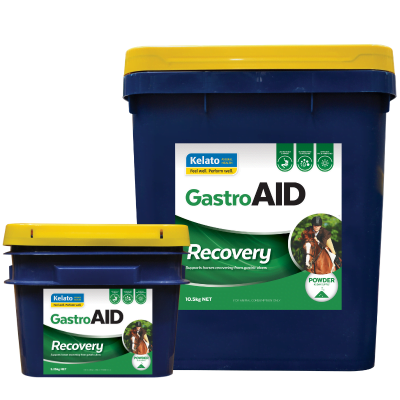
GastroAID Everyday is formulated to maintain the health and function of the total digestive tract. Its daily use acknowledges the importance of optimal digestive function for a healthier, happier horse. While GastroAID Everyday still targets stomach health, it contains significantly less coating agents. GastroAID Everyday is also particularly beneficial for hindgut health due to the combination of a unique, powerful prebiotic and two live yeast probiotics.
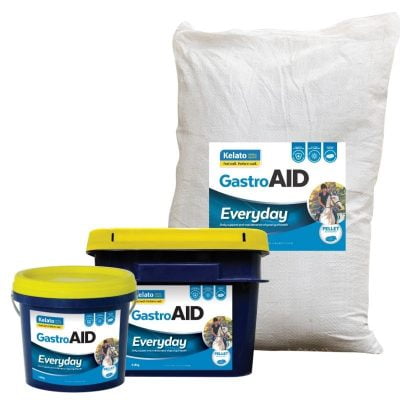
Want to find out more? Head to the GastroAID page, get in touch on 1800KELATO or email technical@kelato.com.au.
